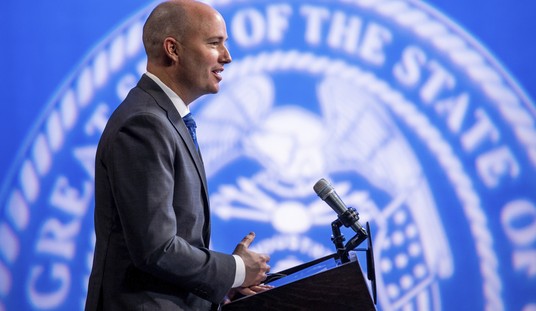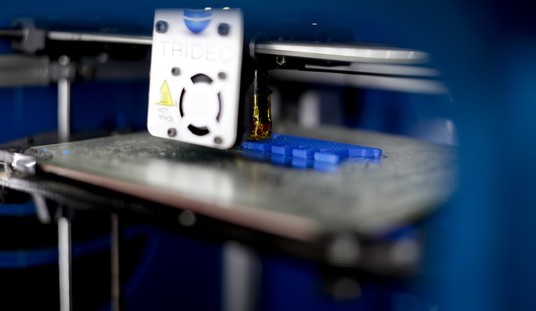One of President Ronald W. Reagan’s closest aides took the East Wing White House tour Jan. 22 and shared his thoughts about the president who left office 24 years ago.
“The best part about being back in the White House is that things don’t change, at least the physical part,” said James F. Kuhn, now a senior manager at Washington’s Broaddus & Associates, but who for more than 20 years was the body man, advance man and personal assistant and friend to President Ronald W. Reagan.
Entering the White House was easier in those days, he said. The first checkpoint was 100 feet closer to the White House and the large Army-green building sheet metal building was not yet on the grounds.
During the first term, Kuhn said he had to park by the Ellipse, the large slightly oblong, green between the White House and the National Mall. “If you got to work late, you couldn’t fit a spot, so you’d have to find a garage somewhere.”
In the second term, Kuhn was given a pass to park on the White House grounds, he said. “It was great. I would just drive in, park and go to work.”
As he passed through the White House, Kuhn said he was flooded with memories of events and details, big and small, such as the back staircase that led to the offices of the military assigned to the White House.
“When we were just in the East Room, the first thing that came to mind was President Reagan and President Gorbachev signing the INF treaty, banning all intermediate nuclear force,” Kuhn said. The consultant has been back to the executive mansion, but his first tour.
“Well, you know, you go from room-to-room, the Blue Room, the Green Room, the Red Room—we are looking in the Red Room now—and Reagan’s last official act as president was in the Red Room,” he said.
“We did a congressional reception in here Jan. 20, 1989, just before the president left for the Hill for the inauguration of President George H. W. Bush,” he said. “I remember taking the president in the Red Room, so he could take the card with the nuclear codes on it and hand that card off to the military aide that day, an Air Force officer,” he said.
Kuhn said the concern was to avoid an awkward transition of the nuclear codes as Bush succeeded Reagan to the presidency. “I didn’t want some aide running up to the rostrum at the Capitol saying to Reagan: ‘Hey, give me the card, so I can give it to President Bush.”
Earlier that day, Reagan talked about what to do with the card to Kuhn and National Security Advisor Colin L. Powell, then an Army three-star general in the Oval Office.
“Reagan pulled the card out of his shirt pocket and said: ‘Hey, Colin, what do I do with this?’” Kuhn said. “I jumped in and told the president we had a plan for that—plus, you’re still president. A couple of hours later, we gave it up, right in the Red Room.”
Kuhn said he first met Reagan in October 1975.
“He was giving a speech at the Union Club in downtown Cleveland at a businessman’s gathering and the head of the group was the CEO of the company that I worked for in Canton, Ohio, and that’s how it all got started,” he said.
Throughout the rest of the 1970s and 1980s, Kuhn was at Reagan’s side, a bond that was forged during the GOP Ohio primary, the following year, he said.
From those days until Reagan November 1994 withdrawal from public life, he was either at Reagan’s side or going ahead with the advance team to ensure the president’s trips and events were properly prepared.
Kuhn said he saw Reagan for the last time just before the 1996 GOP national convention in San Diego.
“It was in his office in Century City, Los Angeles, at that time, he was so-so” he said. “There was some recognition, but he was not the same.”
In the fight for the 1976 GOP presidential nomination, Reagan challenged President Gerald R. Ford, who became president upon the 1974 resignation of Richard M. Nixon.
The quandary for Reagan and the Republican Party that Ford was seeking election in his own right was two-fold. Despite the natural loyalty to a president from one’s own party, many Republicans were furious that Ford pursued many of the Nixon’s liberal domestic and foreign policies.
The other problem, was one of determining whose turn was it to be president?
Prior to Nixon’s resignation, Reagan was the most prominent Republican leader in the country. The former actor had served two successful terms as the governor of California from 1967 to 1975, and had himself run for president in 1968—losing the nomination to Nixon.
If he won, Reagan would have been two weeks shy of his 66th birthday, for the former California governor, it could have been his last shot. Reagan lost the nomination to Ford who lost to James E. Carter, but he came back to beat Carter in 1980—but only after beating George H. W. Bush, who became Reagan’s vice president, in the primaries.
Kuhn said at the end of the Reagan administration, he considered staying on at the White House, but the staffers for the new president would not keep on anyone, who did not support Bush in the 1980 primaries. “It’s really too bad because they missed out on a lot of great people, who could have helped them.”
Still active in Republican and conservative politics, Kuhn said he is most proud that the Reagan Presidential Library, Simi Valley, Calif., asked him to deliver the keynote at address at their program for Reagan’s 100th birthday in 2011.
Standing on the limestone stairs out of the White House that he walked with Reagan on his last day in office, Kuhn said he is gratified to see the permanent mark Reagan left on America.
“The legacy is well beyond anything I could have ever comprehended when he walked off these steps,” he said.








Join the conversation as a VIP Member